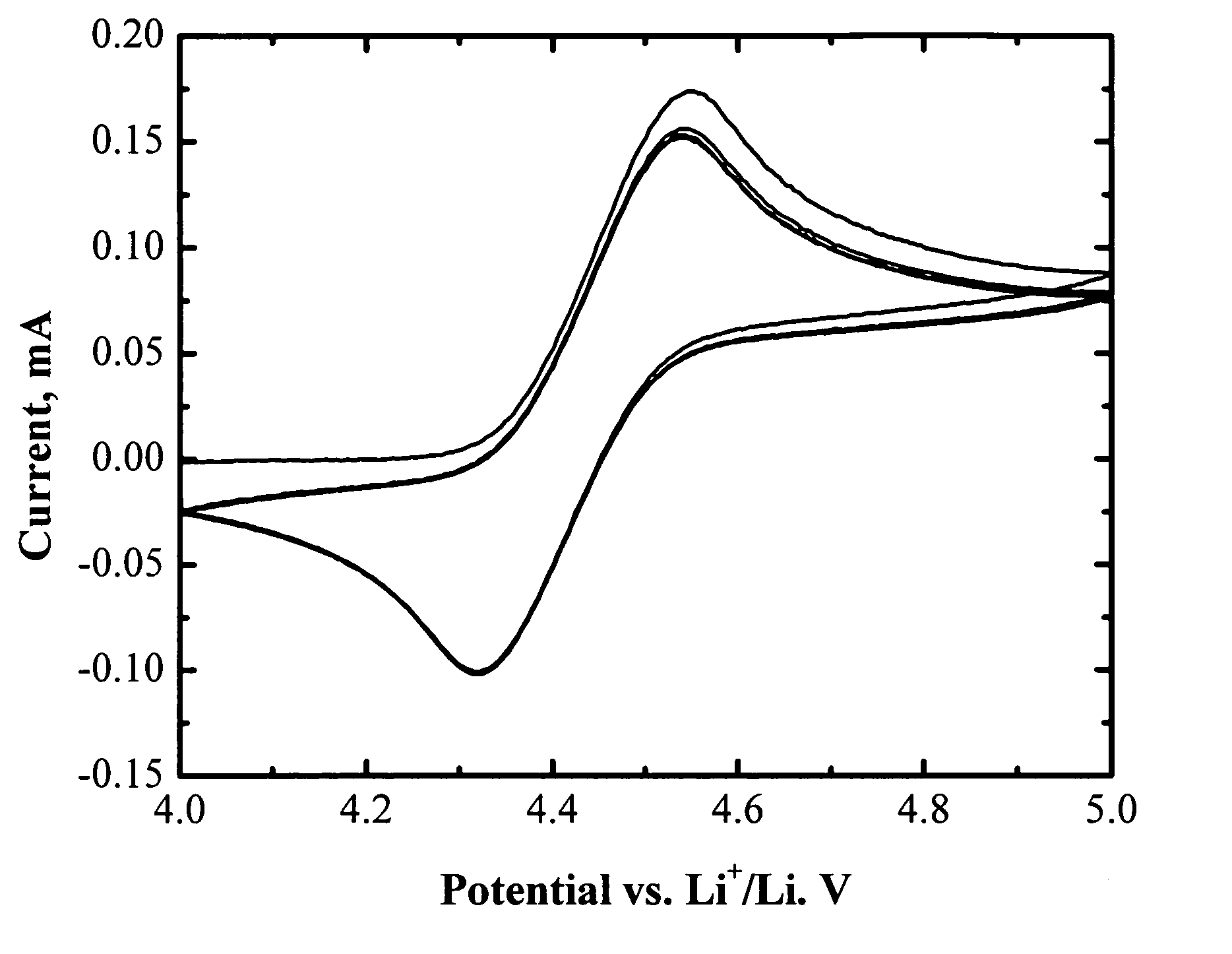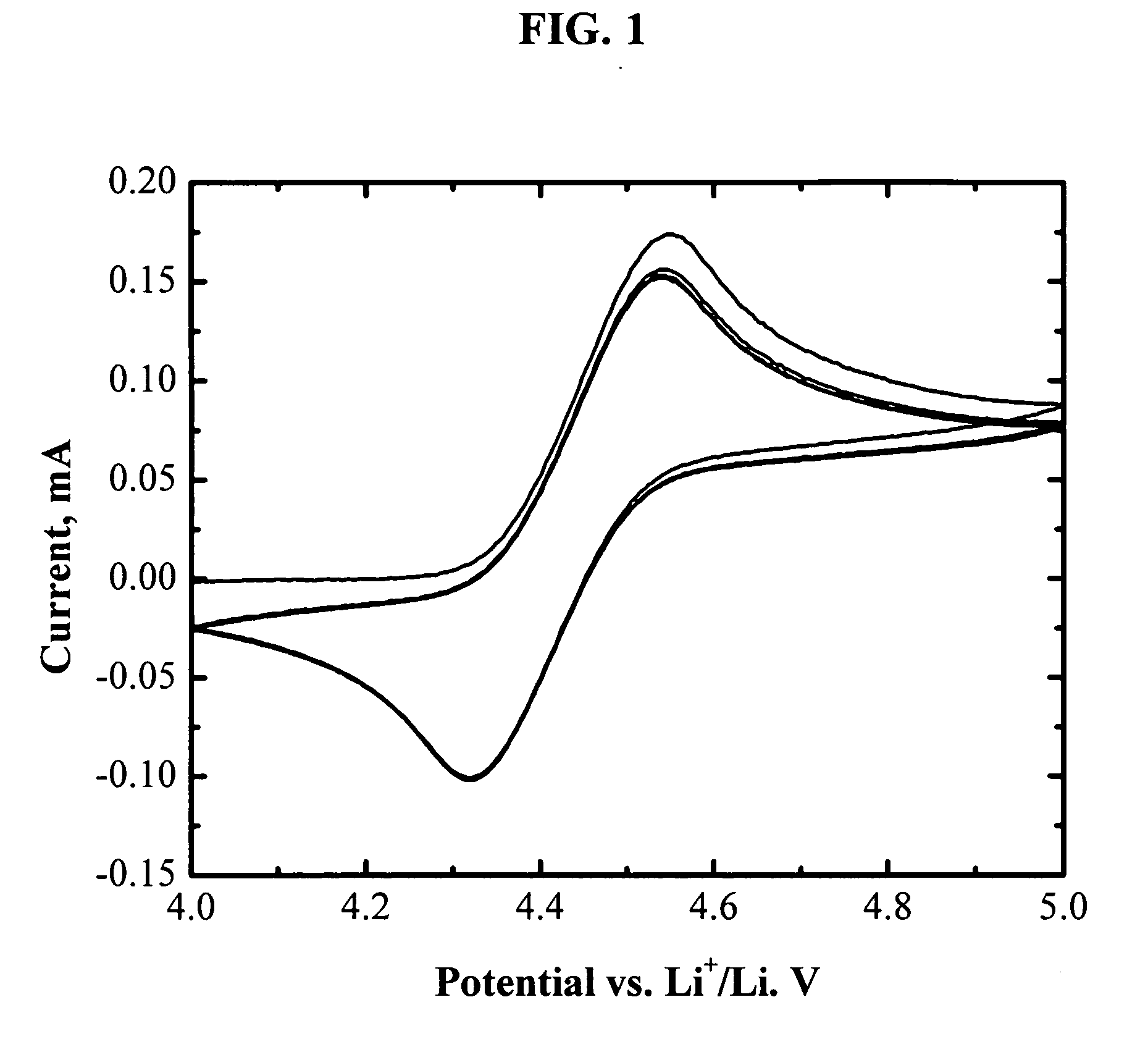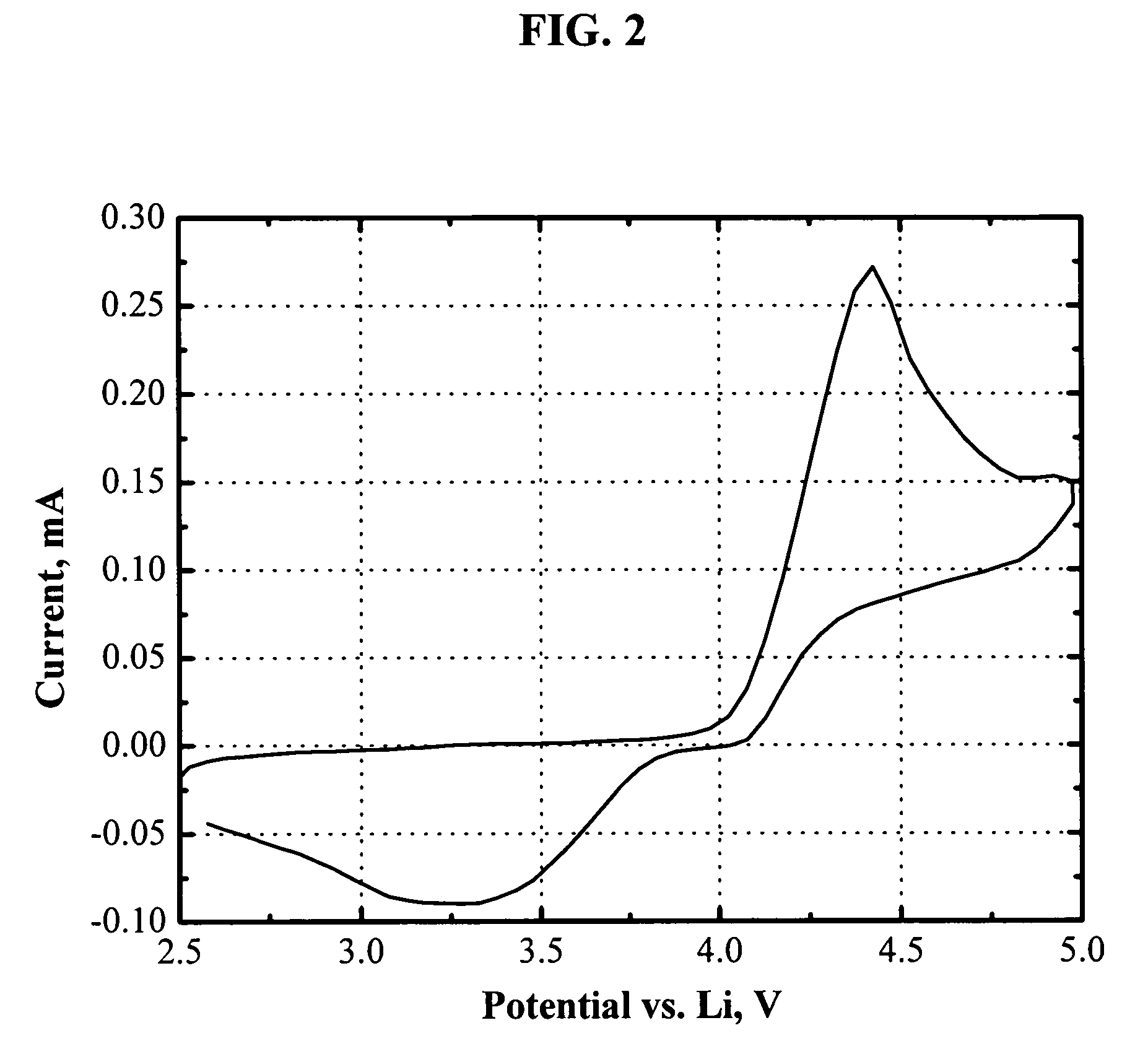Novel redox shuttles for overcharge protection of lithium batteries
a lithium battery and lithium-ion battery technology, applied in the field of lithium-ion rechargeable batteries, can solve the problems of dangerous lithium-ion battery overcharge, dangerous voltage of battery, and even explosion
- Summary
- Abstract
- Description
- Claims
- Application Information
AI Technical Summary
Benefits of technology
Problems solved by technology
Method used
Image
Examples
example 1
[0065]FIG. 1 shows the cyclic voltammogram of an electrolyte of 1.2 M LiPF6 in EC / PC / DMC (1:1:3 by weight) with 3 wt % (tetrafluorobenzo-1,2-dioxyl)-pentafluorophenyl-borane. One pair of reversible peaks shows up at about 4.4 V vs. Li. It is well know that the main electrolyte components (EC, PC, DMC, and LiPF6) are electrochemically stable up to 4.8 V vs. Li or higher. The reversible electrochemical reaction at 4.4 V vs. Li is therefore assigned to the redox reaction of (tetrafluorobenzo-1,2-dioxyl)-pentafluorophenyl-borane. Its high reversibility makes it promising as a redox shuttle for overcharge protection of lithium-ion batteries. Moreover, the redox potential of (tetrafluorobenzo-1,2-dioxyl)-pentafluorophenyl-borane (4.4 V vs. Li) is high enough to protect all the state-of-art positive electrode materials for lithium-ion batteries.
example 2
[0066]FIG. 2 shows the cyclic voltammogram of an electrolyte of 1.0 M LiPF6 in EC / DEC (1:1, by weight) with 4.6 wt % 1,2-bis(trimethylsiloxyl)-tetrafluorobenzene. The oxidation reaction was triggered at about 4.1 V vs. Li, and the oxidation current peaks at 4.4 V vs. Li. The reducing reaction shows up as a big hump during the reverse scan. The reduction current peaks at about 3.3 V vs. Li. In case of overcharging, the reduction reaction occurs at the negative electrodes, whose potential is always around 0 V vs. Li (<<3.3 V). Therefore, 1,2-bis(trimethylsiloxyl)-tetrafluorobenzene is also capable of protecting lithium-ion batteries from being overcharged.
example 3
[0067]FIG. 3 shows the voltage profile of two LiFePO4 / MCMB (meso-carbon microbeads) cells containing 8 wt % (tetrafluorobenzo-1,2-dioxyl)-pentafluorophenyl-borane. The electrolyte used is 1.2 M LiPF6 in EC / PC / DMC (1:1:3 by weight). Both cells were charged at a C / 10 rate for 10 hours, and then discharged at a C / 10 rate to 3.0 V. During the first 10 hours of testing, the normal charging plateau for the LiFePO4 / graphite cell is observed at about 3.4 V. Once the cells are fully charged, the potential rises rapidly until approximately 4.15 V, where the shuttle is activated and carries the current through the lithium-ion cells. Therefore, the cell voltage is nearly invariant under the help of the redox shuttle added otherwise the cell voltage would rise rapidly until triggering electrochemical reaction of the cell components. After the 20 hours charging period, the current was reversed and the cell was discharged to a cutoff voltage of 3.0 V.
PUM
| Property | Measurement | Unit |
|---|---|---|
| temperature | aaaaa | aaaaa |
| cutoff voltage | aaaaa | aaaaa |
| electronegative | aaaaa | aaaaa |
Abstract
Description
Claims
Application Information
 Login to View More
Login to View More - R&D
- Intellectual Property
- Life Sciences
- Materials
- Tech Scout
- Unparalleled Data Quality
- Higher Quality Content
- 60% Fewer Hallucinations
Browse by: Latest US Patents, China's latest patents, Technical Efficacy Thesaurus, Application Domain, Technology Topic, Popular Technical Reports.
© 2025 PatSnap. All rights reserved.Legal|Privacy policy|Modern Slavery Act Transparency Statement|Sitemap|About US| Contact US: help@patsnap.com



